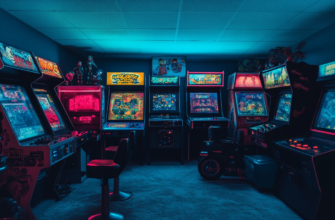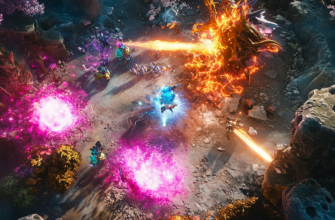- The psychology of spending money in free-to-play games: why we donate and how to avoid pitfalls
- Why understanding donation psychology in free games is crucial for gamers
- The tools of psychological persuasion in free-to-play games
- 1. The sunk cost fallacy
- 2. Fear of missing out (FOMO)
- 3. Social influence
- 4. The endowment effect
- How to avoid overspending in free games: step-by-step tips
- Step 1: Set a monthly gaming budget
- Step 2: Recognize emotional triggers
- Step 3: Convert purchases to real-world terms
- Step 4: Get more enjoyment from free content
- Free vs paid: Comparing value in the long-term
- Understanding game devs: why they encourage donations
- Conclusion: Be smart, play smart
The psychology of spending money in free-to-play games: why we donate and how to avoid pitfalls
If you’re a gamer like me, you’ve probably dipped your toes into a few free games. You know, the ones that promise all the fun for none of the dollars—until they offer a fancy sword, a cool character skin, or that quick progress boost. Suddenly, “free” drifts into the background, and you might find yourself reaching for your wallet. Been there, done that. But why do we, as gamers, often spend money on free games? It’s all about psychology, my gaming friend.
Why understanding donation psychology in free games is crucial for gamers
This topic hits home for many of us. Whether you’re a casual or hardcore player, understanding the reasons behind your spending habits can save you from a depleted bank account, especially since more gaming companies are perfecting methods to encourage players to donate. Donations are often targeted through cosmetic upgrades, battle passes, or in-game currency scarcer than a shiny Pokémon.
Let me delve deeper into this invisible gaming force—the psychology behind why we donate in free games. Knowing what drives this spending will not only help you make smarter decisions but also help avoid common gamer pitfalls. Take it from someone who has fallen for those tempting deals a couple (okay, more than a couple) of times.
The tools of psychological persuasion in free-to-play games
Game developers are no strangers to tapping into behavioral psychology. Free-to-play games, sometimes referred to as freemium games, use certain triggers to push players to feel attached, anxious, or simply eager to progress faster. Often, these triggers aren’t always noticed right away, allowing them to subtly influence your gaming behavior when you least expect it.
1. The sunk cost fallacy
The sunk cost fallacy is one of the most brutal mental traps when it comes to free games. It essentially means that once you’ve spent some time or real-world money, you feel more obligated to keep spending to make that time or money “worth it.” Ever played a game, knew it was time to put it down, but then told yourself, “I’ve already spent $10— what’s $5 more gonna hurt?” That’s the sunk cost fallacy at work.
2. Fear of missing out (FOMO)
Oh yes, FOMO—every gamer’s weakness. It’s the ticking countdown on an exclusive event, the limited-time-only skin drop, or a bonus for first-time purchasers. Game devs sprinkle just enough scarcity to poke at your need to not be left behind. FOMO pushes you into making snap decisions, like making donations to get those special digital rewards that may never make a comeback.
The rule here? If you can wait it out and still enjoy the game, you’ll often find similar opportunities or even better events in the future.
3. Social influence
Free games can be surprisingly social, and don’t think developers aren’t aware of it. They bank on selling status—characters or gear that give the sense of belonging to an elite crowd. The top guild, the high-ranking player—sometimes these statuses require exclusive donations and purchases that set you apart. You might think, “Hey, if my friends are customizing their avatars with cool skins, I’ll look like a noob if I don’t.”
Remember: it’s all digital. Cool skins don’t make gameplay more fun, and don’t let peer pressure drag you into unnecessary donations.
4. The endowment effect
Free games evoke the endowment effect by gradually making you feel ownership over certain items, avatars, or even character stats. This drives players to protect and enhance what they feel they already “own” — even if those things were free or easily replaceable. When you’ve grinded for hours becoming attached to a tonsured goblin cleric, suddenly those flashy robes seem less like a luxury and more like a necessary upgrade.
Take a moment before buying that premium item and ask yourself if it benefits your gameplay experience. Often, a genuine interest in game strategy outshines cosmetics.
How to avoid overspending in free games: step-by-step tips
Now that we understand the why behind donations in free games, let’s talk about how to prevent these psychological tricks from oversecurity-ing your wallet. Trust me, it’s easy to get caught up when the adrenaline’s high and the dopamine hits fast, but let’s cool things down and get strategic.
Step 1: Set a monthly gaming budget
This seems old-school and maybe even a bit “parental,” but giving yourself a limit on how much you’re willing to spend in free games per month will immediately help you prioritize what’s worth it (and what’s not). Maybe allocate a specific amount, say $25, and stick to it. If you’re tempted to drop more, remind yourself that next month isn’t far off.
I like to think of it this way: if I was to buy a full AAA title, I’d easily drop $60. If I spend that much within 3 months on a free game, it’s no longer “free.” Keep your budget realistic and remember, it’s about value.
Step 2: Recognize emotional triggers
Start identifying when you’re feeling sucked into the FOMO or endowment effect. If you spot the “fear of missing out,” take a step back before deciding and ask yourself, “Will this matter in a week?” If it doesn’t add long-term value, skip it. Being able to pause and reflect in these situations goes a long way toward staying in control.
Step 3: Convert purchases to real-world terms
A nifty trick to control unnecessary spending is converting in-game currency or items into real-world equivalents. Let’s say there’s an epic skin you want, and it costs 5,000 Gems. Translate that in terms of actual dollars. Is that customization worth $20? When you view it in this down-to-earth context, making donations becomes a more rational decision.
Step 4: Get more enjoyment from free content
Focus on what makes the game fun without buying stuff. Past me was all about sword skins and electric-blue armor, only to realize afterward that these cosmetic upgrades weren’t enhancing my overall experience. Some of the best free-to-play games are designed to be enjoyable without spending a dime. Maximize the fun from what you have instead of constantly chasing donations.
Free vs paid: Comparing value in the long-term
Free games that rely on donations often implement a “whale” model, where a small percentage of users contribute a large chunk of the revenue. If you’re not careful, you can easily become part of that crowd. My advice? Weigh the value of staying free-to-play versus upgrading.
- Progression: Can I still progress without paying? Some games are relatively fair in how far you can progress without spending. Others? Not so much.
- Your time: Are you paying to avoid grind? Consider if you’re using donations as a time-saver. Sometimes the grind is part of the fun.
- Social rewards: How much do the social dynamics matter? If you feel pressured because friends have bought skins, remind yourself that gameplay is king—stick to your guns.
Understanding game devs: why they encourage donations
At the end of the day, it’s essential to remember the developers behind your favorite free games are companies. They need to make a profit somewhere, and donations allow them to make up for the upfront cost you’re skipping. Running live servers, producing new content—they’re constantly working behind the scenes. Supporting them isn’t a bad thing, but knowing when to say “enough” is key.
Conclusion: Be smart, play smart
There’s nothing inherently wrong with donating in free-to-play games—after all, they offer entertainment just like going to the movies or buying a music album. The key is being mindful and balanced. Don’t let clever psychological tactics control your spending. Take charge of your wallet, understand the gaming traps, and put your money toward the things that truly elevate your gaming experience.
Next time you game, remember this advice. You’ll be happier, your gameplay will be fun, and your bank account won’t hate you either.
If you’ve loved this deep dive into gamers’ psychology, leave a comment below or share it with your guild. Who needs a shield when you’ve got knowledge, right?

















